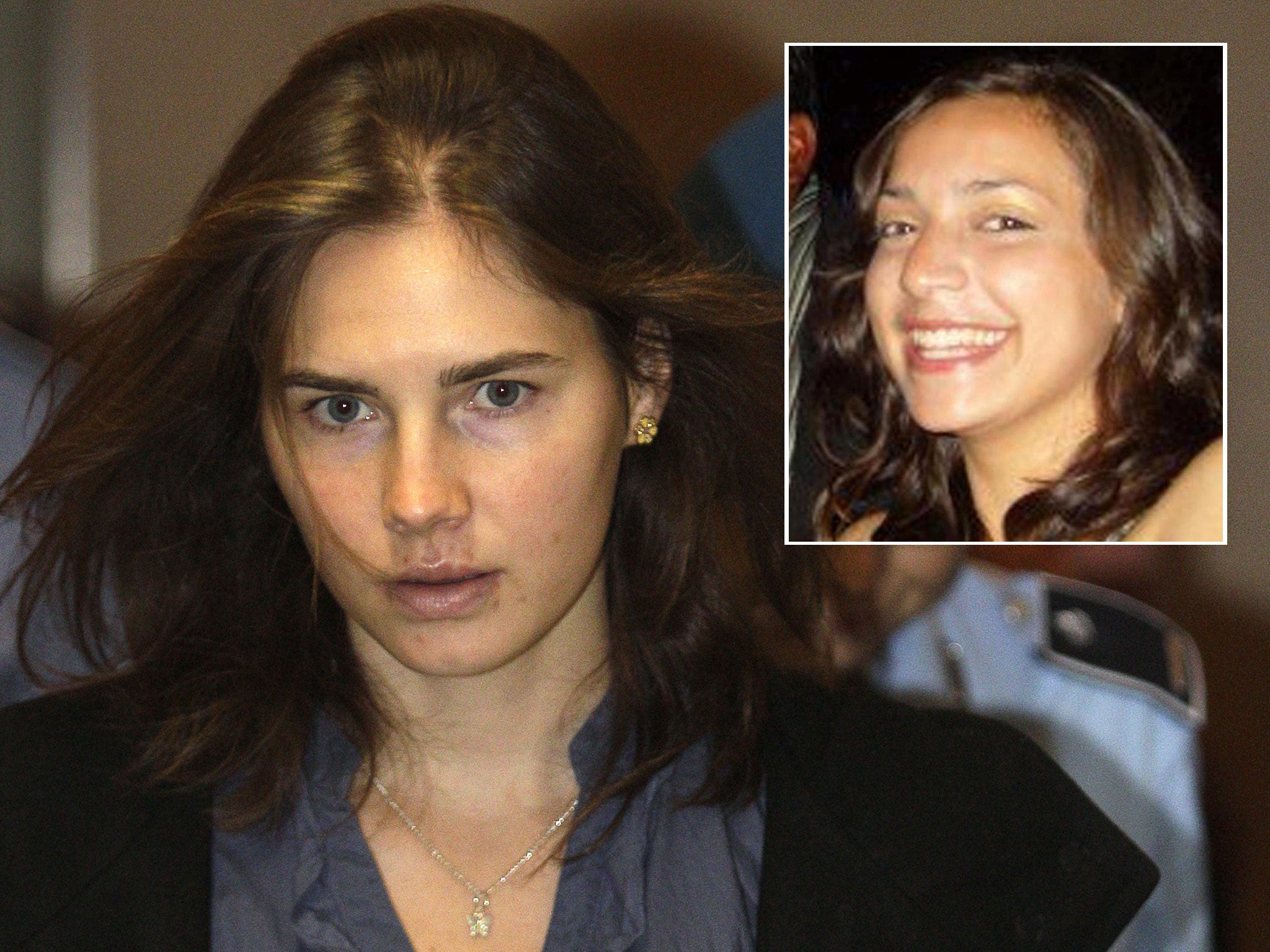The re-trial of Amanda Knox in the Kercher case will be a show without its star
If it was murky and unreliable then, how can it become less so now?


When the re-trial of Amanda Knox and Raffaele Sollecito for the murder of British student Meredith Kercher gets under way for real in Florence on 6 November, there will be one notable absentee. The only person in the entire case that the photographers and TV cameramen and reporters were desperate to have a good look at, will be missing. Amanda Knox who was found guilty, and spent four years in jail, most of them on remand, and who was given an especially harsh sentence because she was supposedly so wicked, will be 4,800 miles away in Seattle.
She will not be extradited, but case absence is permitted in Italy’s curious and frequently dysfunctional justice system. For years, the occasions on which Silvio Berlusconi turned up to face his accusers could be counted on the fingers of one hand. David Mills, the British lawyer accused of perjury and laundering money for Berlusconi, was another frequent no-show: like Knox now, he seemed to find it prudent to remain beyond Italy’s borders.
Yet it is Amanda Knox’s absence that will be felt most keenly. “Angel Face” they called her during the previous trials. I reported much of the proceedings for The Independent and I was as glued to her as anybody else. We couldn’t get enough of that pretty, unmarked, innocent-looking American face.
Much of the savage fun the tabloid press got from the case was in the piquant contrast between those sweet features and the brutal knifing and murder of which she was accused. Either you couldn’t imagine her doing it, when there was no motive, no previous record, no forensic evidence against her, and when she and Raffaele had hung around and hung around, in the days after the killing, to be of help to the investigators; or else, despite all that, you could imagine it, in which case it was about the most saleable commodity a tabloid newspaper editor could hope to alight on, on a slow day for celebs.
All of which, I began to feel when reporting the case, put a vicious and unjust slant on the treatment of Knox and Sollecito right from the start. The prosecutors and police wanted a quick, clean wrap-up to this atrocious scandal; Giuliano Mignini, the chief prosecutor and a conservative Catholic, was known to have it in for those he saw as a menace to the community, whether foreign striptease artistes or British second-homeowners with poppies growing wild in their front gardens or the dope-smoking British and American students littering Perugia’s august centro storico.
Knox and Sollecito were certainly guilty of smoking dope and fornicating – they said as much themselves – while the only people able to bear witness to their non-involvement in Meredith’s murder were their fornicating, dope-smoking selves. So Mr Mignini wrapped the whole decadent scenario into an unforgettable description of a drug-addled orgy leading to the killing of Meredith, throwing in some perverted Satanism for good measure. That was as good as the trial got, that description. He never repeated it because there was no evidence whatsoever that it had happened. But it certainly stuck in people’s minds. It’s probably the one thing that most people “know” about Amanda Knox.
So now their eminences are taking one final bite at this much-nibbled cherry. I feel acutely sorry for my colleagues who will have to sit through it all again. What on earth new can anyone hope to learn about evidence that was collected in such an amateurish way at the time, about the dodgy DNA on the bra clasp, on the disputed DNA on the knife plucked at random from Sollecito’s kitchen and declared to be the murder weapon? If it was murky and unreliable back then, how can it have become less so in the intervening years? Yet the public interest is still there, or a new film on the case, entitled Angel Face and starring Kate Beckinsale, would not be about to go into production. The stack of books about the case continues to climb. But it’s not surprising that Knox’s own memoir, Waiting To Be Heard, is selling less well than the publishers had hoped. Amanda the innocent? Who wants to hear about that?
Bosnia’s World Cup qualification masks divisions
It’s nice to see Bosnia-Herzegovina heading to Brazil for the World Cup, after defeating Lithuania this week. It is only 20 years since Yugoslavia was a major force in world football. Once Serbs and Croats have dried their tears after their early departures, perhaps they will summon what remains of South Balkan regional pride to cheer on Safet Susic’s fearless, high-scoring Bosnian team.
But excited chatter about football putting the Bosnian Humpty Dumpty back together again is not rooted in reality. The ugly fact that Bosnians have been living with since the signing of the Dayton Accords is that ethnic division is now built into the nation’s superstructure: American diplomat Richard Holbrooke crowed about ending the war, but the effect of the agreement he brokered was to freeze the wartime status quo in place.
This was brought home by the census carried out this week, the first since 1991: the only identifying boxes people could tick were ethnic ones. The fans may cheer on the national side with patriotic fervour, but once they have sobered up they have no choice but to resume being Bosniaks (Bosnian Muslims), Croats and Serbs again.
www.peterpopham.co.uk
Join our commenting forum
Join thought-provoking conversations, follow other Independent readers and see their replies
Comments
Bookmark popover
Removed from bookmarks